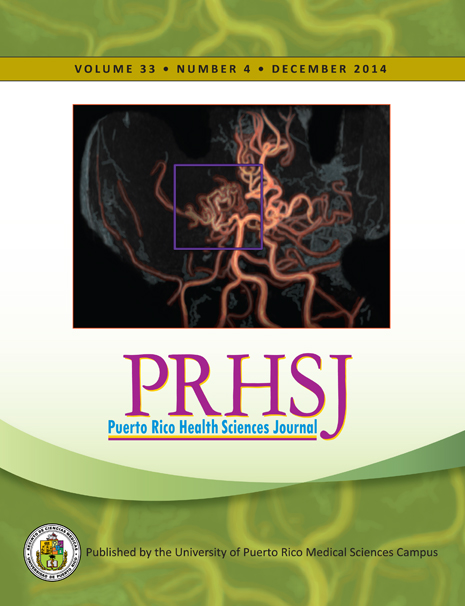Abstract
Objective: The prevalence of human papillomavirus (HPV) in the oral cavity has not been as well studied as genital infection and its prevalence among drug users is uncertain. This study describes the prevalence and correlates of oral HPV infection among a sample of drug users in Puerto Rico (PR). Methods: Cross sectional study of 271 drug users aged 18-35 years, not undergoing substance abuse treatment, living in the San Juan metropolitan area. Oral samples were collected through an oral rinse and HPV infection status was detected through PCR and HPV typing. Information on covariates was obtained through face-to-face interviews and serum analyses. Results: A total of 34 participants were positive for any HPV type (12.5%), whereas 13 individuals (4.8%) were positive for one of the 38 type-specific HPV probes evaluated. Among those HPV positive, the most common HPV type detected was non-oncogenic HPV 72 (11.8%, n=4). Oncogenic HPV types detected were 35 (5.9%) and 56 (2.9%). Factors associated with oral HPV infection included binge drinking (OR=3.85, 95% CI=1.40, 10.58), HIV positivity (OR=4.67, 95% CI=1.58, 13.74) and ever having engaged in commercial sex (OR=3.55, 95% CI=1.46, 8.67); infection did not differ by age or gender. Conclusion: Consistent with previous studies in the genital and oral tract, HIV infection, alcohol abuse and commercial sex practices were strongly associated with oral HPV infection. Future studies should assess the implications of oral HPV infection on oral cancer risk in this population.
Authors who publish with this journal agree to the following terms:
a. Authors retain copyright and grant the journal right of first publication with the work simultaneously licensed under a Creative Commons Attribution License that allows others to share the work with an acknowledgement of the work's authorship and initial publication in this journal.
b. Authors are able to enter into separate, additional contractual arrangements for the non-exclusive distribution of the journal's published version of the work (e.g., post it to an institutional repository or publish it in a book), with an acknowledgement of its initial publication in this journal.
c. Authors are permitted and encouraged to post their work online (e.g., in institutional repositories or on their website) prior to and during the submission process, as it can lead to productive exchanges, as well as earlier and greater citation of published work (See The Effect of Open Access).
